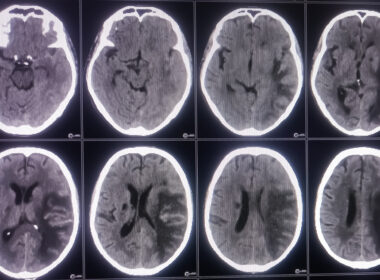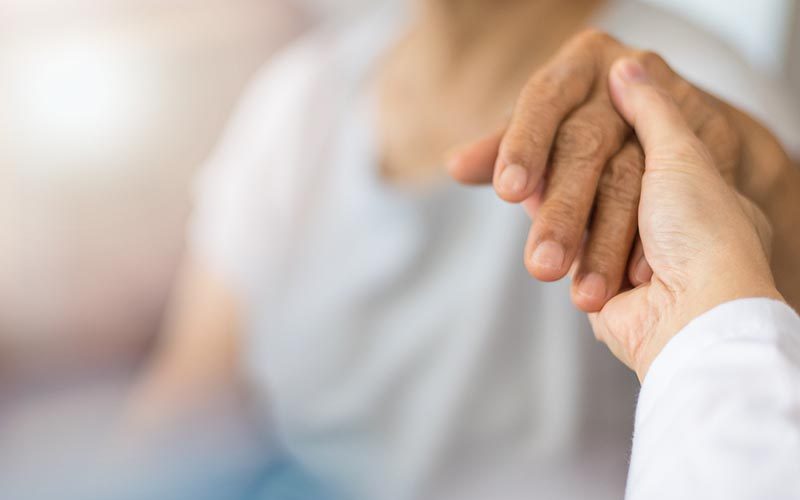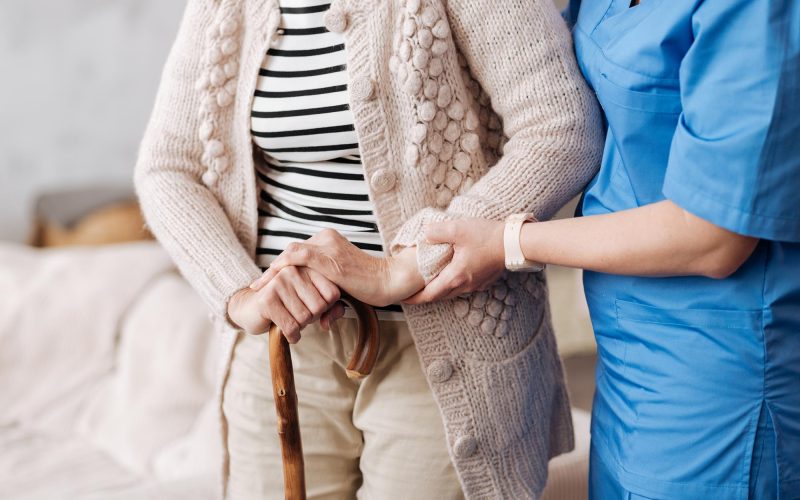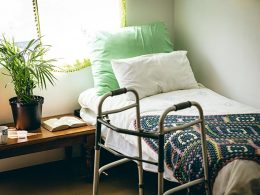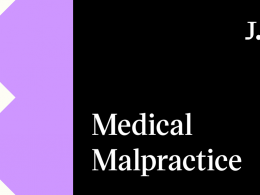Elderly people need proper health care, but usually, they are very susceptible to abuse from caregivers and people they trust. For elder abuse prevention, you may need to understand what causes this in the first place. Knowing the causes will help in discovering applicable solutions.
What is an Elderly Person?
An elderly refers of an older adult aged sixty (60) years or more.
What is Elderly Abuse?
Elder abuse is any act or behavior that endangers an older adult or elderly’s safety and causes injury. This may be an intentional act, or may be completely unintentional. Elderly abuse comprises the following common signs:
Neglect :
This is the willful or unwilling inability to provide the basic health care requirements of older adults (over sixty years of age). Examples of basic requirements include food, water, shelter, clothing, hygiene, and safety.
Physical Abuse:
Any intentional harm to physical assault that could harm an elderly person’s health is considered physical abuse. Use of physical force that may result in bodily harm, physical pain, or impairment all indicate that an elderly person may be experiencing physical abuse.
Financial Abuse:
Any act that involves the misappropriation of an elder’s funds, properties, or assets is considered elder financial abuse. These actions could involve utilizing undue influence or gaining money or property without the owner’s knowledge or consent. The financial exploitation, concealment, misappropriation, or dishonest deprivation of money or property belonging to the elderly or an adult with a disability constitutes financial abuse as well.
Sexual abuse:
This refers to any act that involves unwanted or coerced touching or sexual advances and activity towards an older adult by family caregivers or professionals responsible for the elderly. Older adults are especially vulnerable to sexual abuse because of health issues which make them dependent on care providers. Additionally, in a nursing home community living setup, some nursing home residents may have histories of sexual abuse, and abuse their peers within the vicinity.
Abandonment:
Any act in which the family members or care providers fail to provide an older adult with enough care and supervision or without justifiable grounds is known as abandonment.
Psychological Abuse:
Any behavior that compromises an older adult’s sense of identity, dignity, or self-worth is considered psychological abuse. These behaviors include verbal abuse, humiliation, social isolation, intimidation, threats, and improper activity control by family members or care providers.
Emotional abuse :
The intentional restriction of an elderly person’s independence, or need to isolate seniors , such as not allowing them to see their loved ones on grandparents day. Such acts are in order to inflict emotions of loneliness, low self-esteem, and emotional suffering is emotional abuse.
What Are the Causes of Elderly Abuse?
The National Center on Elder Abuse asserts that elder abuse cases may be rooted on the following factors:
Cultural and Familial Differences
In certain cases, elderly people are mistreated or abused as a result of problems with their own families or cultures. Senior care is one area where certain families and cultures place a greater emphasis than others. As a result, these communities typically have lower rates of elder abuse.
Elder mistreatment is more prevalent in societies or households where the elderly person is viewed as a burden or a useless contributor to society.
Unfortunately, it is worth noting that the majority of occurrences of elder abuse are by a family member or members. Often, they are the ones who abuse an older relative emotionally, sexually, physically, and financially.
As there is frequently a lack of accountability for others to recognize the warning signs and assist the family member who is being abused, this type of violence can be complicated. Who is abused and who is not might also depend on culture and different family norms.
Understaffing May Cause Elderly Abuse
Due to the rising rates of elder abuse and the impact it has on nursing home residents and facilities, the issue of understaffing in nursing homes has gained media and consumer attention, especially in recent years.
In certain circles, nursing facility understaffing is even referred to as a crime. This is especially true if the assisted living facility managers purposely understaff the facilities so as to save money on caregiver salaries and increase their profits.
Understaffing May Result in Neglect
Abuse and neglect of residents is a common outcome of understaffed nursing facilities. Nursing home residents who are neglected are likely to miss out on the care they need to maintain their physical and mental health.
Residents in nursing homes who experience this kind of neglect may suffer terrible consequences, especially if they are immobile or have mobility problems. Falls, bedsores, muscle atrophy, and other ailments can be brought on by understaffing that results in neglect, all of which can be avoided with enough staff members in each facility.
What is the first step to prevent elder abuse?
The first elder abuse prevention response is to recognize elder abuse. Millions of older persons worldwide experience suffering and anguish as a result of the physical, emotional, psychological, sexual, emotional and financial abuse, and it may go on while for a prolonged period.
Most elder abuse incidents go unreported because it can be challenging for caregivers to recognize it. Yet, elder abuse occurs in both private and public care institutions as well as in individual households. Sadly, it is most frequently committed by reliable individuals, such as a family member, friends, and trained carers.
How to Recognize Elderly Abuse
There are many forms of abuse, and often more than one type of abuse can occur. Below are warning signs to look out for in your elderly loved one which may help prevent abuse in the future.
- fear
- poor emotional well-being such as depression or low mood
- confusion
- loneliness
- feeling of helplessness
- if they have a history of mental illness, it may appear to be worsening; with more frequent agitation than before
- an older person who is hungry, thirsty or has lost a lot of weight
- an older person who is wearing the wrong clothing for the weather conditions
- an older person who is living in an environment that is dirty or unsafe
- An older person deprived of basic hygiene
- an older person whose health problems have worsened due to their medications being mismanaged
- an older person with unexplained conditions such as hypothermia, dehydration or pressure sores
- you can detect elder financial abuse by analyzing large withdrawals or big changes in banking habits or activities from bank accounts.
- missing belongings such as walking canes and hearing aids.
- malnourishment
- An elderly person suddenly not having money for basics such as food, clothing, transport costs, and medical bills
- financial exploitation also involves property transfers when the person is no longer able to manage their financial affairs
- fear, stress, and anxiety
- pain or restricted movement
- bruises, bite marks, cuts, burns, scratches
- unexplained accidents
- unexplained injuries such as broken bones, sprains, punctures
- over or under-use of sedation
- stories about injuries that conflict between the older person and others
- anxiety, sadness, or grief at the loss of contact with others
- withdrawal or listlessness
- loss of self-esteem
- an elderly loved one has unexplained sexually transmitted infections
- recent incontinence (bladder or bowel)
- internal injuries
- bruises, bite marks, pain, burn marks
- trauma including bleeding around genitals, chest, rectum or mouth may be signs of sexual assault.
- torn or bloody underclothing or bedding
- anxiety when near, or contact suggested with the abuser
Consequences
Abuse and neglect of older people can have severe negative effects on their physical and mental health, as well as their financial situation and social standing. These effects can include, for example, physical harm, early mortality, depression, cognitive decline, financial ruin, and nursing home placement. The effects of abuse can be particularly severe and recovery time may be prolonged for older individuals.
Why is it important to prevent elder abuse?
A large reason why it is important to gain and adapt elder abuse prevention skills is because too little is known about elder abuse and how to prevent it. Yet, the number of incidents of elder abuse are anticipated to rise globally due to the growing aging populations in many nations.
Even if the fraction of many older adults who experience abuse stays constant, the number of victims worldwide will rise quickly as the population ages, reaching almost 320 million victims by 2050. In total, the number of individuals worldwide who are 60 years of age or older will reach an estimated 2 billion by then. By acting now, we can prevent elderly abuse incidents in the future. Prevention is better than cure.
World Elder Abuse Awareness Day
The WHO and partners released “Tackling abuse of older people: five priorities for the UN Decade of Healthy Ageing (2021-2030)” on June 15, 2022, World Elder Abuse Awareness Day. These five goals were determined after extensive deliberation and include:
- Prevent abuse by combating ageism, since it contributes significantly to the underreporting of elder abuse.
- Create more and better data to draw attention to the issue.
- Create and implement cost-effective strategies to stop the exploitation of seniors.
- Make an investment case by emphasizing how fixing the issue is a good use of the funds.
- Raise money because the issue requires greater resources to solve.
Steps to Addressing Elder Abuse and Preventing It
Understanding and addressing the variables that expose people to violence or shield them from it is necessary to avoid elder abuse.
To comprehend their struggles and offer assistance, pay attention to older people and the people who are caring for them. Ensure that the facility site complies with state laws regarding elderly care.
Also, report elder abuse to local adult protective services departments in the police force, the long term care ombudsman, or private organizations that offer adult protective services in your area if you witness or suspect abuse. To find the reporting numbers, government departments, state statutes, and other resources for your state, use the National Center on Elder Abuse Listing of State Elder Abuse Hotline External symbol.
Teach others and yourself how to spot signs of abuse and report it. Find out how the symptoms of aging differ from those of elder abuse. Check in with elderly people who may not have many friends or family.
Train tellers in banks on how to recognize situations where someone may be trying to exploit an older adult. This can considerably increase protections for vulnerable consumers.
Poster contests may encourage the youth to use creativity and technology to find elder abuse prevention solutions.
We should all give support to overworked caregivers, such as assistance from friends, family, or neighborhood relief care organizations; adult day care programs; counseling; support groups and outlets designed to foster mental well-being. Encourage and support those who are struggling with drug or alcohol abuse to get help, whether they are older adults or caregivers.
Protecting the Elderly from Future Abuse In the Case that You Discover They Have Been Abused
The following are crisis intervention measures to teach and equip an elderly in the case of abuse:
- Stay calm, do not argue with the abuser
- Report abuse by calling for immediate help from the local police, especially if there is physical injury or immediate danger
- Seek help from neighbors
- Bring identity documentation, medical aids information some money and needed medication to a relative’s home for temporary stay
- Seek help from an elder’s national council directory for social services/organizations for temporary shelter, if necessary
- During the 2022 World Elder Abuse Awareness Day a caregiver who asked for anonymity was live on a private tv station suggesting that the media industry may play a role through more frequent elderly abuse awareness infomercials.
- Understand personal rights and increase awareness for elder abusive behaviors
- Strengthen problem-solving abilities to life events (e.g., learn how to manage own funds and properties)
- Enlarge social support network
- Seek help from community resources and share with a trusted person when problems are encountered
Caregivers are encouraged to take the following actions in preventing elder abuse:
- Establish good communication with the elders; avoid unrealistic expectation on one’s or the elder’s mental and physical abilities
- Show acceptance to the elder’s feeling and provide emotional support
- Maintain and enhance optimal physical health and go for frequent checkups at Elder Care disease control centers.
- Use positive coping strategies for mood management (e.g., maintain an appropriate level of physical activities, listen to music), and share feelings with family and friends for emotional ventilation.
- Learn caregiving skills to alleviate the caring burden
- Share the care-giving work with others and seek community resources for support
- Proper staff training, supervision, and monitoring
- Promote public education on respect and care for elders
Conclusion
All seniors deserve to live their final years experiencing dignity and love, not pain and suffering. That’s why it’s so critical for caregivers and professionals to recognize the signs of abuse, report it, and end it. Preventing elder abuse is not just the responsibility of caregivers but of the whole of society.
Would you like to learn how to handle a specific elderly abuse case? Contact us at Justpoint by filling out our evaluation form below.




